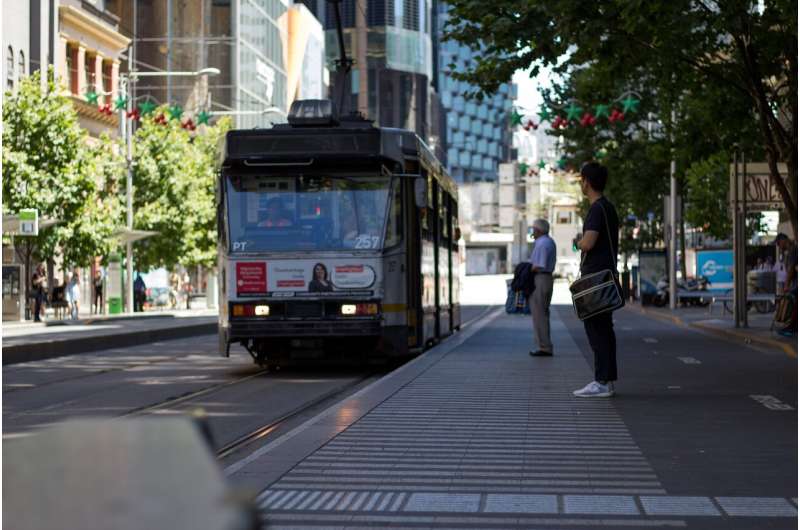Study shows geographic shift in U.S. social mobility

Dylan Connor's father worked as a house painter while his mother tended to their home and family, one that included six boys. Neither of his parents finished high school, but they built a future for their children that included their success. This may sound like a story made in America.
But Connor is from Ireland. He is now an assistant professor at Arizona State University's School of Geographical Sciences and Urban Planning where he studies social mobility, the chances that children who are born into poverty can climb out of poverty as adults.
Social mobility differs considerably from country to country. The United States was once exceptional when it came to social mobility but is not anymore compared with other countries, like Canada, Ireland and Sweden. The landscape has shifted unevenly over the last century with some areas of the U.S. scoring high in social mobility and others scoring low, some persistently so. Connor's recent study on the subject paints a picture of what social mobility currently looks like in the U.S. and how it has shifted over the last century.
"Just within the last five or six years, we've realized that there is great variation within the U.S. in terms of how places provide opportunity," said Connor, co-author of the study.
His study, "The changing geography of social mobility in the United States," is published online in the Proceedings of the National Academy of Sciences. Michael Storper, distinguished professor of Regional and International Development in Urban Planning at the University of California, Los Angeles, is a co-author of the paper.
To find out what social mobility looks like, Connor and Storper built a data set consisting of 2 million children counted in the 1920 and 1940 censuses. The researchers followed them from childhood through adulthood tracking their social mobility, noting which geographical areas have improved, which areas have declined and what it is about those areas that determined their respective fates.
The researchers divided the country into six regions: Northeast, South, Midwest, West, northern plains and mountains, and southern plains and mountains.
They found that in the early 20th century, the industrial corridor in the Northeast and Midwest and the West provided the greatest opportunities for social mobility. But lately, the urban Midwest has not fared well.
"What we're seeing is that, in relative terms, the urban areas of the Midwest have gotten a lot worse," said Connor. "There's been a real collapse in the urban Midwest in terms of social mobility."
In contrast, Minnesota, Utah and the northern central plains have shown gains in social mobility. "The children growing up there seem to be doing relatively well, and that wasn't necessarily true in the past," said Connor. Previously, many of those children would have stayed and often worked in agriculture, but now the children growing up there are benefiting from their communities and schooling.
"One of the interesting things we noticed about kids growing up in the upper Midwest and the northern plains is that they're quite likely to move away," said Connor. "They're taking their skills to other labor markets and using them there. But kids growing up in poverty in the South seem to be less likely to do that."
The South has shown stubbornly low levels of social mobility over time." It's an interesting case, because the South actually gained a lot of jobs over the 20th century," said Connor. "A lot of manufacturing jobs have gone there, but upward mobility hasn't improved in the same way."
The study also shows that white children in the South fare worse than white kids elsewhere. That may be because in a more socially divided place, people are less willing to fund local schools or contribute to the communal good because they don't see themselves benefiting from it, said Connor.
In essence, what the study is showing is that a lot of change in social mobility is driven by changing economic fortunes over time, like the shift of jobs to different places. "The Midwest is a classic image of that," said Connor.
"You had an industrialized area, a lot of manufacturing jobs, but they're no longer there in the same numbers," explained Connor. "The jobs have moved abroad to countries like China or to the U.S. South and Southwest. So, a lot of the change in the landscape is about changing economic fundamentals, whereas the persistence of low social mobility in the South, for example, is also driven by forces that have even deeper roots, like racial inequality, and these forces can feed back on the family structures and schooling experiences of people who grow up there."
Connor's study shows that to improve social mobility, both job availability and community issues, like schooling, healthcare, and racial segregation must be addressed.
"Those issues have much more power in predicting social mobility than average incomes or the number of highly sophisticated jobs in a local labor market," he said. "We're never going to be in a position where economic opportunity is going to be spread evenly over the country. It's never been the case and it probably never will be. But I think that a healthy society is one that produces lots of geographical mobility and intergenerational social mobility."
More information: Dylan Shane Connor el al., "The changing geography of social mobility in the United States," PNAS (2020). www.pnas.org/cgi/doi/10.1073/pnas.2010222117
Journal information: Proceedings of the National Academy of Sciences
Provided by Arizona State University





















